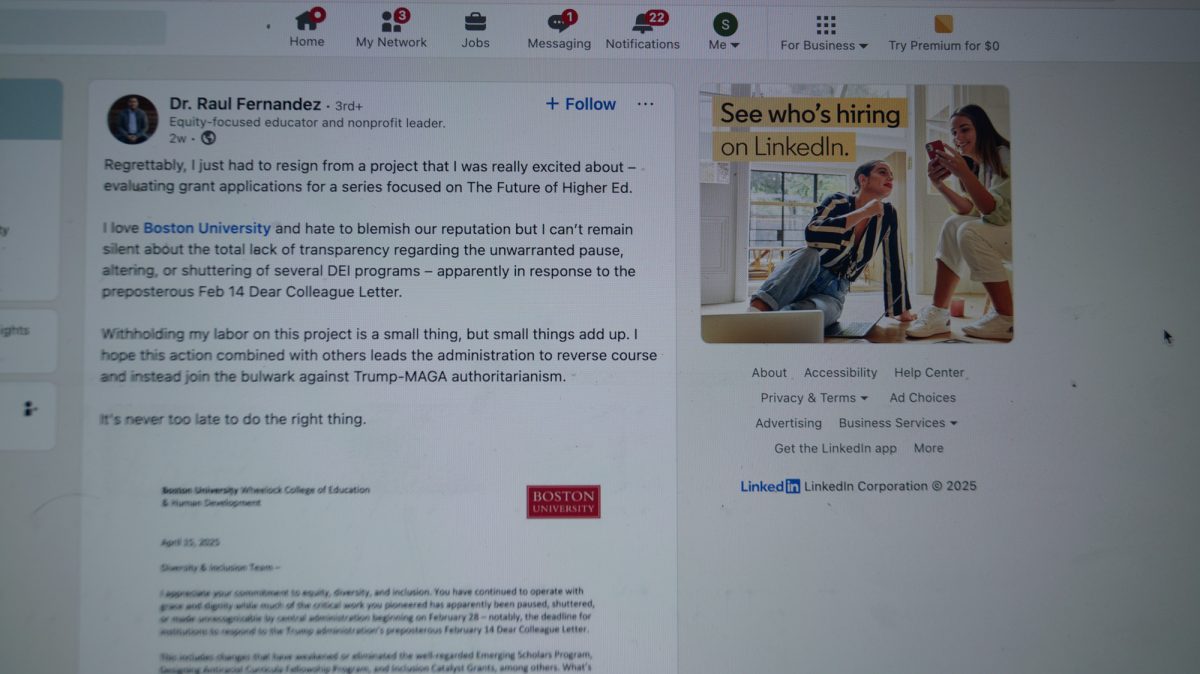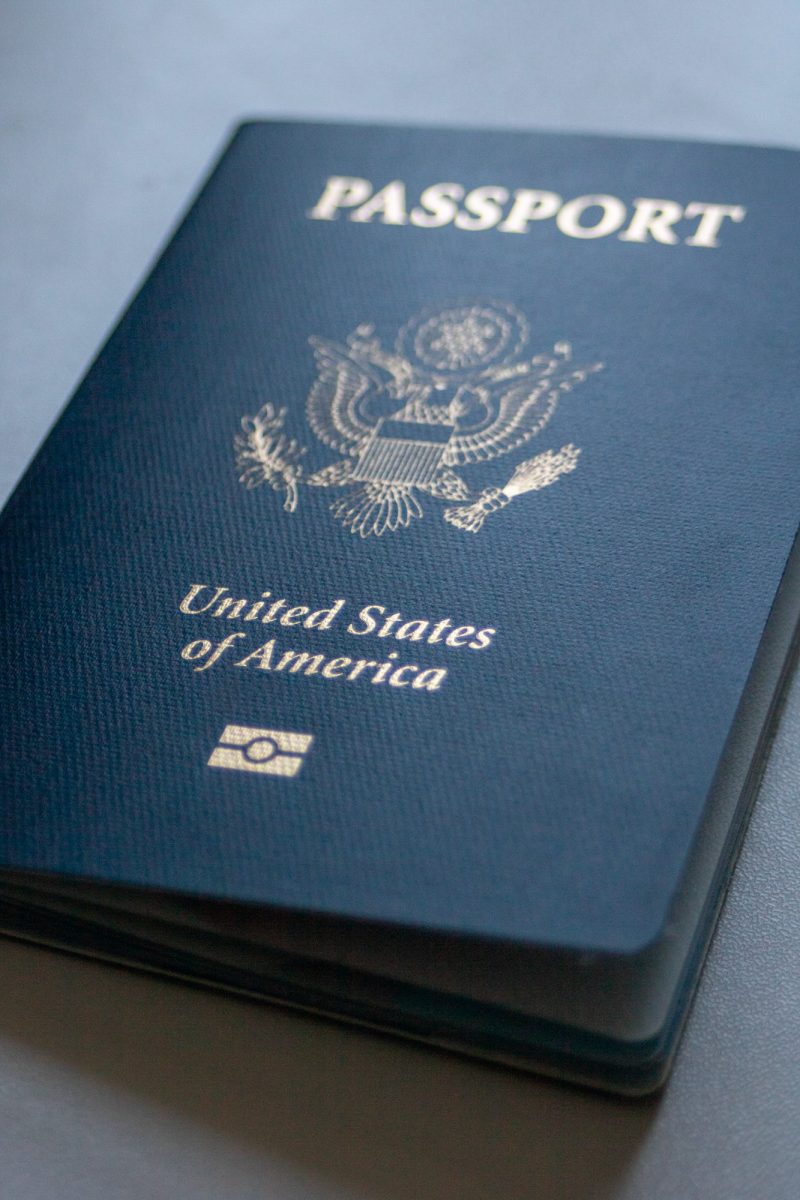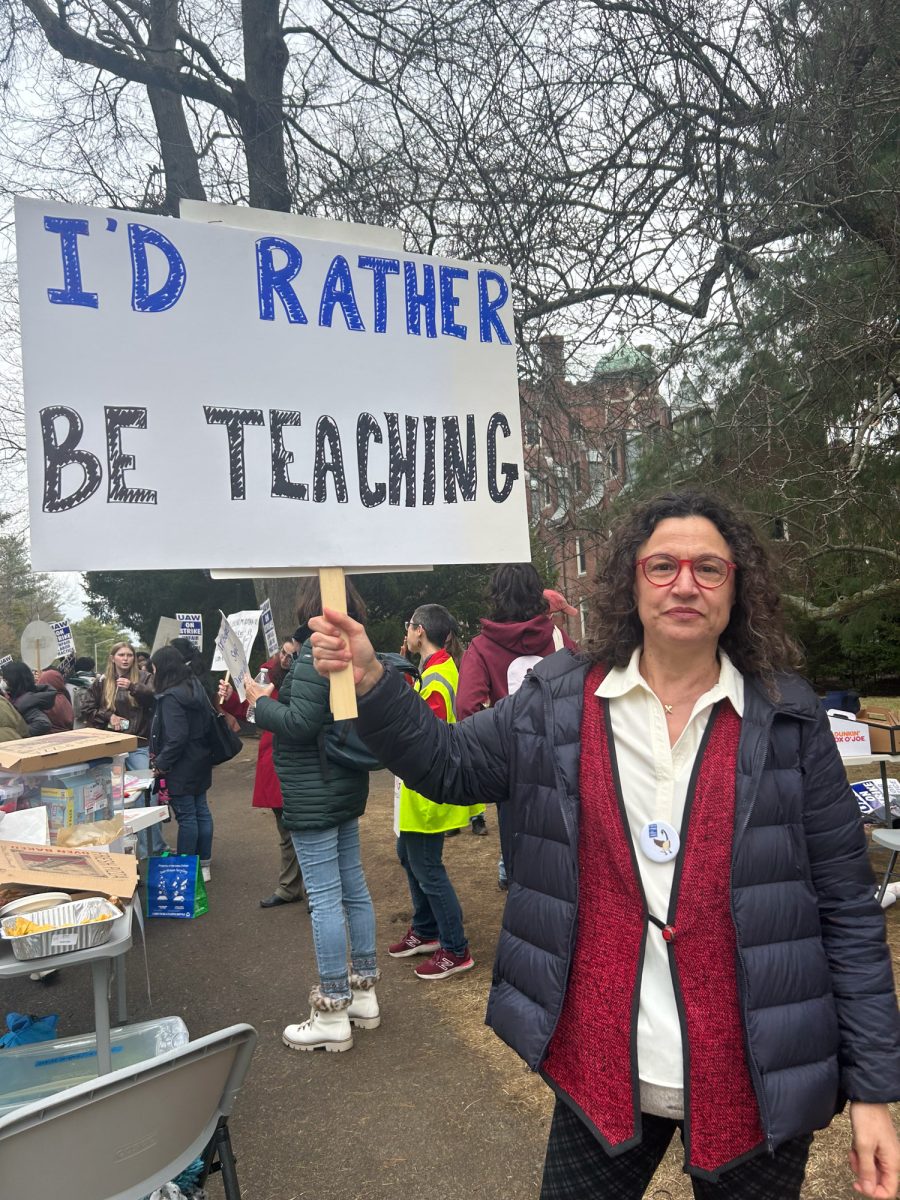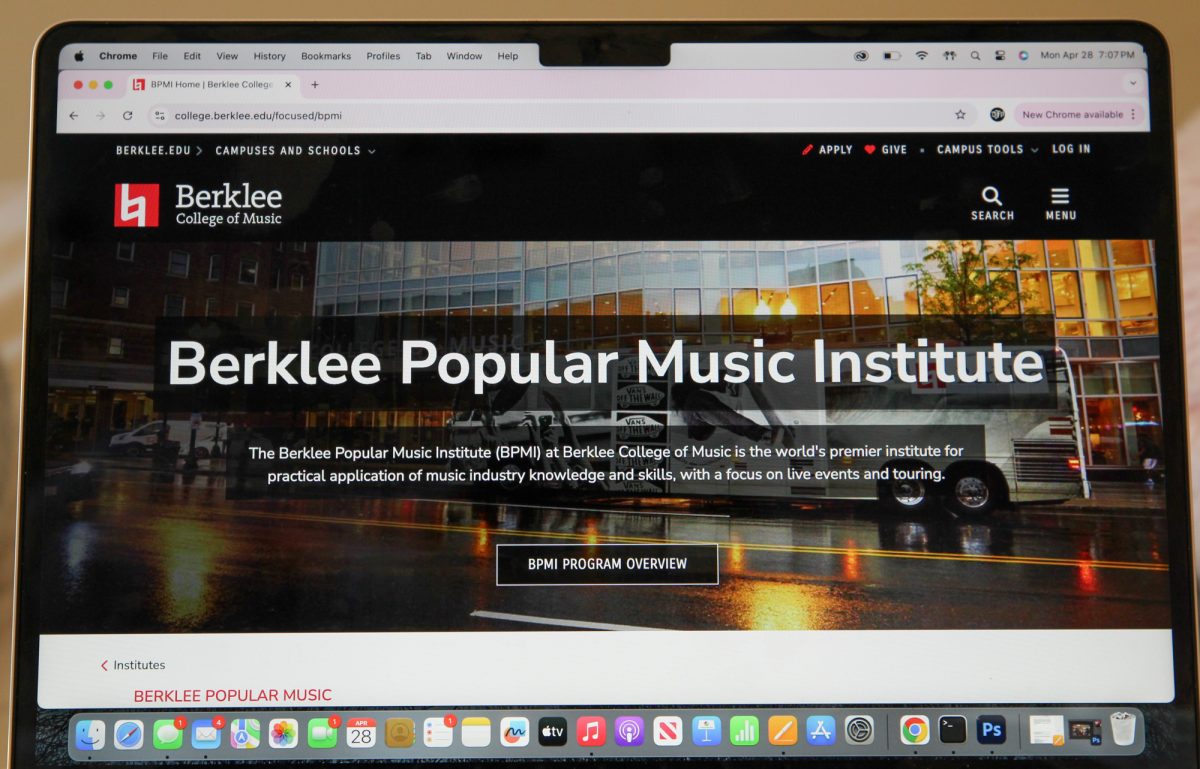Boston University students passing through the George Sherman Union Thursday afternoon might not have been aware that the free gum offered to them by Office of Residence Life Health and Wellness Educator Beth Grampetro contained more than a stick of Wrigley’s.
The 300 sticks of gum Grampetro and School of Public Health first-year graduate student Laura Rubin handed out to students in honor of the American Cancer Society’s annual Great American Smokeout were individually wrapped with “statistics and information about why chewing a stick of gum is better than smoking a cigarette,” Grampetro said.
One stick read, “Free gum does not contain: arsenic, cadmium, lead, formaldehyde, ammonia or hydrogen cyanide. A free cigarette would have those ingredients … and over 4,000 more.”
Grampetro said she decided to hand out gum because she thought it would be an interesting way to give students information.
“Our goals today are to make some information available to students about smoking,” she said. “We’re really just getting information out to the general public. On average, it takes a person about seven tries to quit. There’s no better day to start than today.”
In addition to the gum, the GSU Link table sponsored by the ORL Wellness and Residence Education Department featured brochures with information about the health risks associated with smoking and a homemade “Jeopardy!” game with questions about costs, quitting, health and social smoking, a topic that Grampetro cites as one of her favorites.
“A lot of people think that if they only smoke when they drink or when they only smoke three or four cigarettes a week, it’s okay,” she said. “But that behavior isn’t much better than having an actual habit. Nicotine is an extremely addictive drug. It’s a lifestyle. It becomes really easy to get wrapped up in it.”
College of Arts and Sciences freshman Meghan Ladolcetta said she did not know when she first accepted a stick of gum that it would come with a message.
“I think [the campaign] is good,” she said. “But I don’t think it’s really going to convince anyone not to smoke.”
Paula Harman, who graduated from BU in 1998, said the facts on each piece of gum were “compelling,” but they would not influence smokers to quit.
“Smoking is an addiction,” she said. “But more than that, it’s habitual. This might raise awareness for a few minutes, but unfortunately the addiction wins.”
Grampetro said the Smokeout served to raise awareness about the dangers of smoking, and she realizes most smokers will not quit after reading a fact on a stick of gum.
“This is not the same as getting a group of people who smoke to sit in a classroom for five or six weeks and learn about quitting smoking,” she said. “This is only a portion of the message. But in a school as large as BU, you do what you can to reach the population.”
The hardest part of organizing the event was helping to individually wrap each of the 300 sticks of gum to hand out to students, Rubin said.
“Tobacco companies give out a lot of promotional materials,” she said. “We had this idea as a counter to what they do. Gum is also a way to avoid smoking.”
Rubin deemed the event a success because people actually paid attention to the facts on the wrappers.
“When people get [a stick],” she said, “they’re actually reading what’s on it. They have to stop and think.”













































































































